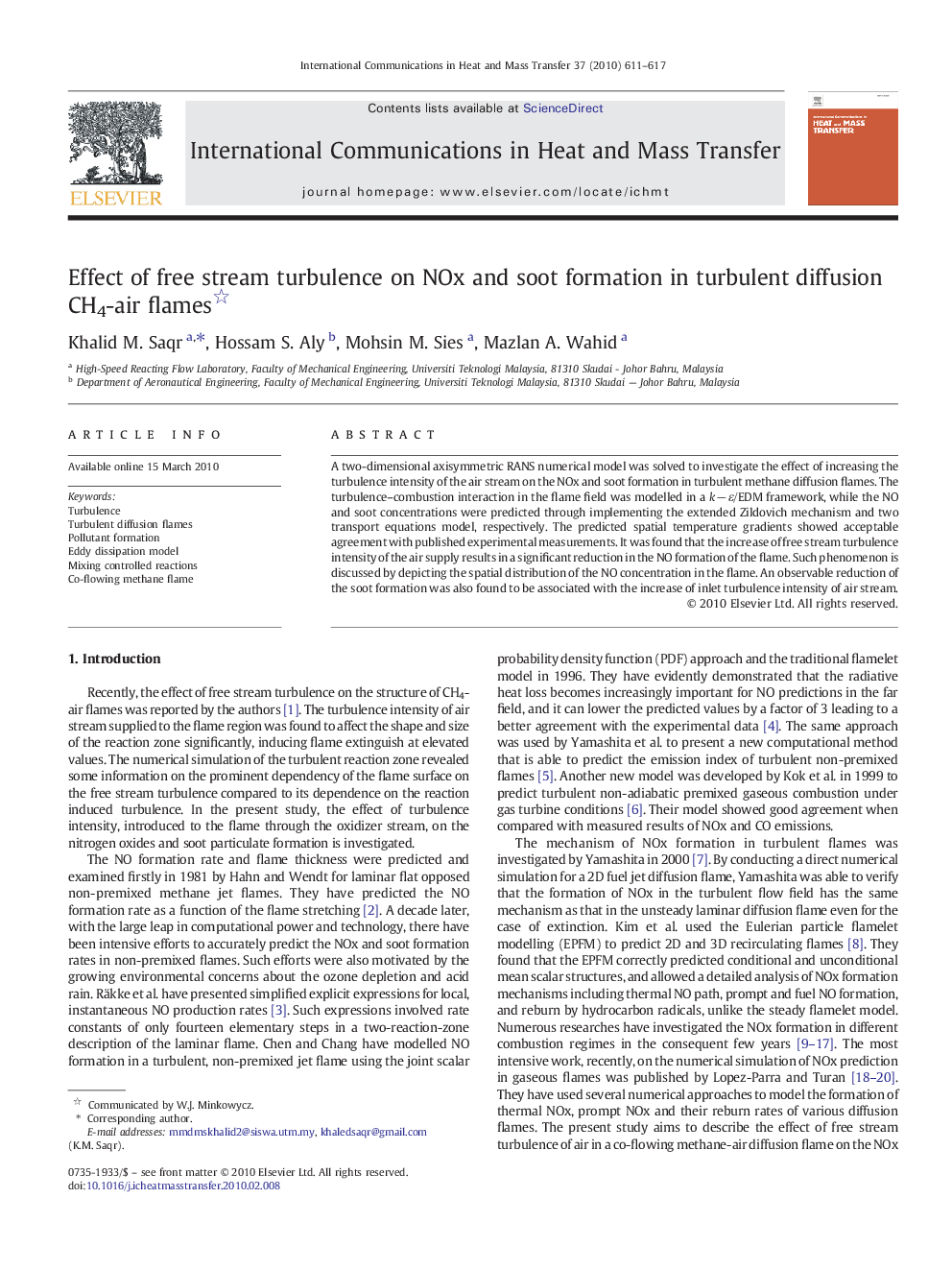| Article ID | Journal | Published Year | Pages | File Type |
|---|---|---|---|---|
| 653860 | International Communications in Heat and Mass Transfer | 2010 | 7 Pages |
A two-dimensional axisymmetric RANS numerical model was solved to investigate the effect of increasing the turbulence intensity of the air stream on the NOx and soot formation in turbulent methane diffusion flames. The turbulence–combustion interaction in the flame field was modelled in a k − ε/EDM framework, while the NO and soot concentrations were predicted through implementing the extended Zildovich mechanism and two transport equations model, respectively. The predicted spatial temperature gradients showed acceptable agreement with published experimental measurements. It was found that the increase of free stream turbulence intensity of the air supply results in a significant reduction in the NO formation of the flame. Such phenomenon is discussed by depicting the spatial distribution of the NO concentration in the flame. An observable reduction of the soot formation was also found to be associated with the increase of inlet turbulence intensity of air stream.
